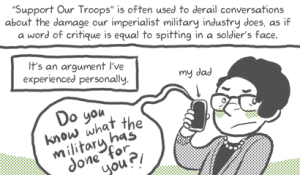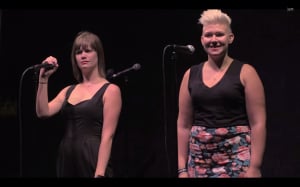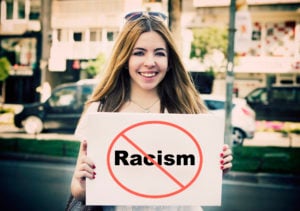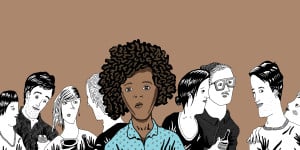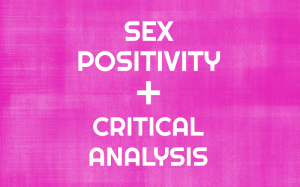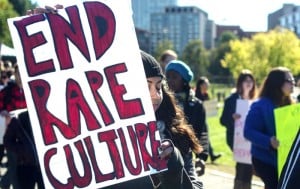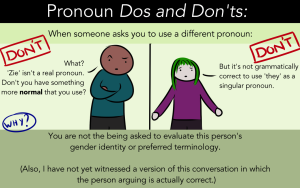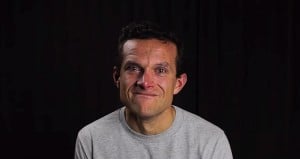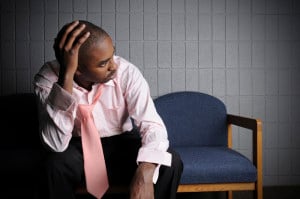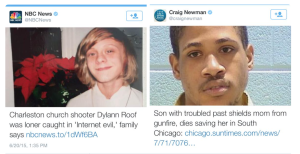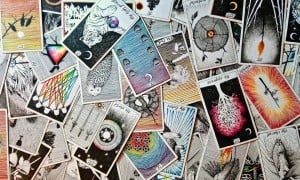
Source: The Guardian
I am a witch.
I spend a lot of my time scraping candle wax off my kitchen table, making my own incense, and praying to Gods and Goddesses most of the world has already forgotten.
Witchcraft means a lot of different things to a lot of different people.
To me, witchcraft is an amazing tool that I’ve used to bridge the gap between religion and politics – to make my everyday practice something that not only could be feminist, but is inherently so.
While many folks today seem to link religion (most often Christianity) with conservatism, my religious practices, and specifically my practice of the craft, is something that brings me even closer to my feminism and anti-capitalist ideologies.
Although one doesn’t have to link witchcraft with religion, many practitioners, including myself, have deeply intertwined the two.
This has led me to a personal religious practice of the craft that seeks community building, universal respect, environmental protection, and alternative forms of healing and living.
All of these aspects of my craft are feminist and revolutionary.
At this point in my life, I can’t really separate my politics from my practice of the craft and my dedication to my deities. My practice and my politics are one.
So how do my witchcraft and my feminism intersect?
Let me count the ways.
1. Witchcraft and Feminism Are Both Politically Charged Doctrines of Belief and Practice
This article is a reflection of my own practices, and religion is a big part of my experience. However, it should be noted that not all people who practice the craft have a religious element to their practice, and not all radical religious folks are pagans or witches.
However, I am one of those religious witches – and my religion is highly political.
Like many other religious doctrines, the core of my belief system is that through the spiritual and the unseen, we are all united. My religious doctrine teaches me that every person, every creature, every plant has a spirit to it. It also teaches me that these spirits and energies are to be respected.
When you think of the core unifying beliefs of most major revolutionary political ideologies, respect, community, and equity are what binds them. In this way, my religious beliefs are inherently radical.
My Goddess and my God ask that I treat everyone and everything that I encounter with the same respect I would show myself or those I love. The only time in which my spiritual doctrine allows me to deviate from this is when someone or something is putting my life or the lives of others in danger.
This is how I approach my political life as well.
As a radical, I seek a world in which the environment and all the people and creatures who live within it are treated with respect and given equal opportunities and care – while also seeking the destruction of the people and systems that corrupt, violate, and exploit, such as our current political system and oppressive institutions.
As a follower of Diana; as a worshipper of the sun, the moon, and the earth; and as a witch, it is my responsibility to engage in radical politics.
These systems of oppression and exploitation are in direct opposition to my political beliefs, as well as my spiritual and religious beliefs.
In order to stay true to the path I have chosen and to get the most out of my practice of the craft, aligning myself with feminist politics is necessary.
2. Witchcraft Allows for Alternatives to Anti-Feminist, Corrupt, and Inaccessible Medical Practices
I’m going to preface this section with saying that I don’t believe in the rejection of modern medicine. There are many amazing things that modern medicine offers us that herbal, crystal, and energy healing cannot.
With that being said, there is also a lot that these methods of alternative healing can offer us that modern medicine cannot. I believe that the best approach to healing is a holistic one that uses all the tools at our disposal. In fact, this strict separation of modern medicine and alternative healing is a relatively new and heavily Western tradition.
Not only does this strict separation deny the long tradition of alternative healing found in almost every corner of the world, but it also cuts people off from information that may help those who don’t have access to modern medicine due to the extremely high prices of healthcare.
It also creates a tradition of healing that is not holistic, and focuses primarily on the body in a way that denies the impact of disease on the spirit and the mind.
Now, many folks with a more narrow view of feminism don’t consider the medical industrial complex in their politics. However, it can’t be denied that the medical industry is just as much a site for racism, transphobia, homophobia, sexism, fatphobia, and ableism as any other institution of systemic oppression.
But because since medicine is shrouded under the guise of healing and science, its practices are often deemed “unbiased” (which is silly since nothing can be truly objective, I think).
Because the medical industrial complex is a site of systemic oppression, my spirituality and my politics demand that I find alternatives. It is here that witchcraft can help us find different avenues towards holistic healing outside of the medical industrial complex.
And it’s no secret among witches that, historically, witchcraft went hand in hand with healing.
In my practice of Stregheria (a blanket term for Italian-American revival religions, and the Italian word for witchcraft), we can see that throughout the provinces of Italy, there was overlap between guaritori (healers), mago (sorcerers), and streghe (witches).
Now, with the domination of modern medicine and the rise of neo-pagansim and revival practices, the connection between the craft, spirituality, and alterative healing has gotten even stronger.
And it’s here that the practices of alternative healing, spirituality, and revolutionary resistance converge.
As a practicing witch, I dedicate a lot of my time to the knowledge of crystals and herbs. This is largely because of their connection to the craft and their specific magical and energetic qualities. However, a major part of mastering these mediums is knowing their medicinal and healing properties.
I feel duty-bound to share this information.
As a witch and a radical, I see the revolutionary potential in knowing the healing qualities of items that are much more accessible than a lot of modern medications. I also see the revolutionary potential in a healing practice that addresses physical as well as emotional damage.
This is especially salient in a world that inflicts so much emotional damage through systemic oppression.
While there is a definite aspect of systemic oppression that affects the body on a physical level, these oppressions also leave emotional scars – emotional and spiritual damage that cannot be healed and addressed through modern medicine as it is now.
Now, this is not new information.
As a white feminist and radical, it would be nothing short of violent to pretend as if neo-paganisn and white revival religions are solely responsible for alternative healings.
In fact, I’ve seen a lot of white pagans steal and appropriate alternative healing methods that only continue to exist through the strength and resistance of native folks and other cultural groups whose history is responsible for so much of these amazing holistic medical ideologies.
That being said, as a radical and as a witch, I find it a part of my spiritual responsibility to learn the medical qualities of found materials in a way that can be shared with my community (in a way that does not steal from practices I am not a part of).
As one amazing midwife once told me, “I practice alternative medicine as a healer and an anti-capitalist.”
3. Both ‘Witch’ and ‘Feminist’ Are Radical Political Identities
“The Burning Times.”
If you’re a witch or have ever done any research into the craft, this is a phrase you have, undoubtedly, seen over and over again.
It’s a phrase used to describe the time in history in which witches were actively hunted down and persecuted. It’s also used by a lot of modern witches to claim a time of genocide against those who practiced the craft. However, it was never as cut-and-dry as many modern witches would like to believe it was.
The times of persecution went hand-in-hand with the rise of the Christian Church as a socioeconomic political power. So the victims of these persecutions were not so much strictly those who would have identified with the craft (although some were).
Rather, those hunted and killed during these times were, more broadly, those who did not strictly align with the teachings of the Christian Church as a religious group, as well as a political power.
So, by the definition of the Church at these times, who were witches?
To get a clear answer on this, let’s take a moment to reflect on what type of people inform modern depictions of witches.
The tropes that stand out the most in my own mind are 1) anti-Semitic depictions of Jewish women, 2) racist depictions of the Romani people (“g*psy” is a racist slur, everyone), 3) racist depictions of black women (like “dark witches” and voodoo and hoodoo priestesses cast in vicious and negative lights), 4) “hags” or women who do not need men, reproduction, or traditional family structures to validate their existences, and 5) devil worshippers.
Now, there is overlap between these tropes, but I singled them out this way because I think they do a good job of bringing to light the kind of people that were targeted by the church.
These are pagans of all beliefs that refused to assimilate to the imperialist goals of the Christian Church, those deemed heathens (Jewish people and folks who sought spiritual connection in ways outside the church’s teachings), and those who rejected the strict social boundaries of the church.
Those killed had a target on their back for very specific reasons that were racist, anti-Semitic, anti-pagan, and sexist.
In this way, a modern identity as a witch is an act to actively identify with practices outside the norm.
To be a witch is to be an outsider.
To be a witch is to be proud of those aspects of your identity that do not conform to what is deemed right by white-supremacist, patriarchal, Christian-dominated social ideology. And what could be more radical, more feminist than that?
To be feminist is to carry a political ideology that looks to reject the oppressive structures in our current society, to be witch is to put those political ideologies on as a jacket and to wear them proudly.
***
As a non-binary trans person who rejects marriage, nuclear family structure, division of community, and Christian imperialism, I identify with “witch” as an outsider.
As a pagan from a family of Catholic pagans, as a femme raised in a matriarchal household, and as a holistic practitioner raised by another, I identify with “witch” religiously and politically.
I identify with “witch” as a feminist who strives to support those who have been and continue to be persecuted by a rigid and oppressive political culture, and I identify with “witch” as a person who lives their life outside of the confines of what is expected of me from society at large.
In all of these ways, my religious practice, my methods of self-healing, and my self-defined identity are both witch and feminist, and I wouldn’t have it any other way.
[do_widget id=’text-101′]
Kris Nelson is a writer who runs a blog full of short queer-centric radical prose and a YouTube channel called The Whispering Witch, focused on uplifting guided meditations and relaxation videos. Kris also runs an online store by the name of SpellBoundTreasures, where they strive to bring magic into the world through crystal jewelry and herbal remedies. They can be contacted on Tumblr or at [email protected].
Search our 3000+ articles!
Read our articles about:
Our online racial justice training
Used by hundreds of universities, non-profits, and businesses.
Click to learn more





